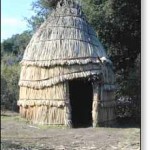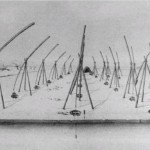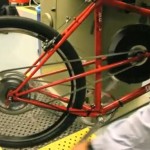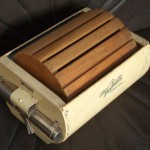“The horse-powered ferryboat, though patented in 1819, can trace its origin of design back to the time of the Romans. The Roman ox boat was an early war vessel propelled by a team of oxen. During the 1700’s, boats propelled by horses could be found on various rivers and canals of Europe. By the early 1800’s, horse powered boats could be found on Lake Champlain and the Hudson River. By the 1820’s, this mode of transportation had spread to the Ohio and Mississippi Rivers, the Great Lakes, and to several other rivers and lakes in the Northeast. This type of vessel was generally utilized for journeys of only a few miles.”
Found at Shipwreckworld. Previously: Trolleyboats.





